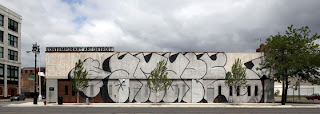Michael H. Hodges/ Detroit News Arts Writer
“Tyree Guyton is a talented artist — an environmental sculptor. We have at least one piece of his hanging in our galleries right now. I am surprised the project has lasted this long. But I think you only have to meet Tyree once to realize this is a determined individual with a very particular vision.” — Graham Beal, director, Detroit Institute of Arts
“Heidelberg asks the viewer a lot of questions — about cities, art-making, the placement of art, community and individual mark-making. I think 25 years is an amazing anniversary. It shows the truth of (Heidelberg executive director) Jenenne Whifield’s observation, ‘Those who say it can’t be done should move to the side.'” — Luis Croquer, director, Museum of Contemporary Art Detroit
“Artists are often at forefront, making us look at things in ways we haven’t seen before — and recognizing issues we sometimes want to ignore. Clearly I think quite a bit about the HP to have their 25th anniversary exhibition here at the museum (up through Nov. 27). I am very much taken with Tyree’s work, and his commitment, persistence and loyalty to his community and city. I like his passion for trying to create change. I am very moved by that.” — Juanita Moore, president & CEO, Charles H. Wright Museum of African American History
“I have always found the Heidelberg Project intriguing, not only as a work of public art — which is very different from art that appears in a gallery — because of the response it’s generated, ranging from the fanatical to the skeptical to the spiritual. Anything that can have that kind of effect has to be called successful at some level. Heidelberg is a huge asset for the city of Detroit. It calls into question a fascinating range of issues, from what makes art to the effect art can have on politics and the social order.” — Reed Kroloff, director, Cranbrook Academy of Art and Art Museum
“There are rich cultural resonances at Heidelberg that reach back to traditions of African grave decoration, and at the same time speak to the complexity of contemporary urban life. The other thing that’s provocative is that the project proposes an alternate notion of community redevelopment — organized around the arts instead of housing and shopping.” — John Beardsley, art historian at the Harvard Graduate School of Design

